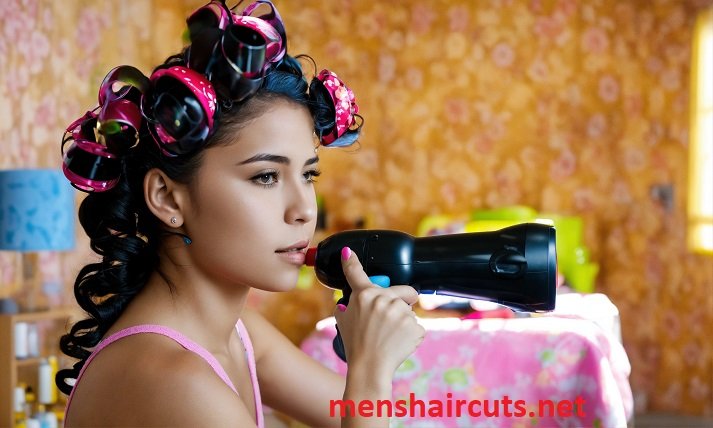Introduction
For many people, having frizzy hair can be a daily problem, particularly in humid locations or during specific seasons. But you can easily tame your mane and get sleek, smooth locks with the correct anti frizz hair products and procedures. This thorough guide covers every aspect of anti-frizz hair products, from knowing what causes frizz to choosing the right solutions for your hair type and way of life.
Causes and Types
Hair strands that are dry, damaged, or deficient in moisture tend to seek moisture from the atmosphere, which results in swelling and the distinctive frizzy look. This is known as frizz. Frizz can be made worse by elements including humidity, heat damage from styling equipment, and even friction from scratchy towels. There are two forms of frizz: internal, which is caused by damage within the hair shaft itself and appears uneven and harsh, and surface, which surrounds the hair and looks like a halo of fuzz.
How Anti-Frizz Hair Products Work
Ingredients in anti-frizz hair products usually work to seal in moisture and smooth the hair cuticle, keeping humidity from entering the hair shaft. Common components include oils like coconut or argan oil, which moisturize and provide shine, and silicones, which form a protective barrier. Depending on your hair type and desired outcomes, these treatments come in numerous formats such as serums, creams, and sprays, each delivering varying degrees of control and shine.
Choosing the Right Anti-Frizz Products for Your Hair Type
Lightweight serums or sprays are perfect for people with fine, thin hair since they give control without making the hair seem heavy. Richer lotions or oils that fully hydrate and tame unruly strands are beneficial for thick and coarse hair. Products that define curls and prevent frizz are generally necessary for curly and wavy hair types. Look for products that are designed to improve curl pattern and offer durable frizz control.
Top Ingredients in Anti-Frizz Products
Because silicones smooth out hair and lessen frizz, they are frequently found in anti-frizz products. Another helpful component is keratin, which fortifies the hair shaft and increases its resistance to moisture. Naturally occurring oils that provide a healthy sheen and hydrate are popular choices for people looking for non-silicone alternatives. Examples of these oils are coconut and argan.
Best Practices for Using Anti-Frizz Hair Products
The secret to optimizing the advantages of anti-frizz products is proper application. To avoid greasiness, start with a small amount and spread it evenly throughout damp or dry hair, paying special attention to the ends and avoiding the scalp. Frizz can be minimized and smoothness maintained throughout the day by adopting styling tricks like reducing heat styling and switching to a wide-tooth comb rather than a brush.
Review of Popular Anti-Frizz Hair Products
Product reviews shed light on how well-performing the many anti-frizz hair solutions available are. Companies such as [Brand Name] sell [Product Name], which is well-known for its lightweight composition and capacity to reduce frizz in humid environments. For people with thick or curly hair who want to reduce frizz, [Brand Name]’s [Product Name] is a popular because of its nourishing qualities and long-lasting effects.
DIY Anti-Frizz Hair Treatments
Natural moisture and hydration can be provided to fight frizz using homemade masks and treatments prepared with items like avocado, honey, or yogurt. For instance, to deeply condition hair and naturally minimize frizz, try a simple weekly mask made of avocado and coconut oil. Aloe vera gel and apple cider vinegar rinses are examples of natural therapies that can assist to balance the pH of hair and smooth the cuticle.
Professional Treatments for Frizz Control
Popular salon procedures called keratin treatments temporarily smooth the hair cuticle and minimize frizz for a few weeks. In order to seal the keratin-based solution into the hair shaft, heat is applied to the hair after it has been applied. Additional salon services, such deep conditioning masks or protein treatments, can also aid in repairing damage and reducing frizz for hair that looks healthier.
Lifestyle Tips for Managing Frizz
Foods high in omega-3 fatty acids, vitamins A and E, and biotin can help to strengthen hair and minimize frizz. Diet is a major factor in hair health. Furthermore, preventing damage and reducing frizz can be achieved by shielding hair from environmental elements like pollution and sun exposure. Choosing low-friction hairstyles, like loose braids or buns, can also aid in keeping your hair smooth all day.
Daily Care Routine anti frizz hair products
Frizz control requires a regular hair care regimen. Use shampoo and conditioner without sulfates that are intended to moisturize and smooth the hair cuticle. Every day, dampen your hair and apply a leave-in conditioner or anti-frizz serum to seal in moisture and guard against humidity before styling. To gently untangle hair, use a wide-tooth comb; combing wet hair can result in damage and frizz. Frequent haircuts every six to eight weeks assist to prevent split ends and maintain frizz-free, healthy-looking hair.
Conclusion
Understanding your hair type, taking into account the environmental elements at play, and following a regular care routine are all important in achieving frizz-free hair. With the knowledge and product suggestions in this book, you’ll be ready to combat frizz and take pleasure in daily smoother, more manageable hair.
FAQ
Can anti-frizz products make my hair greasy?
To prevent greasiness, anti-frizz products should be used sparingly and customized to your hair type. If your hair is fine, go for lighter formulations.
How often should I use anti-frizz hair products?
The needs of your hair and the product’s directions determine how often you should use it. Applying a tiny quantity once a day or as needed is usually adequate.

